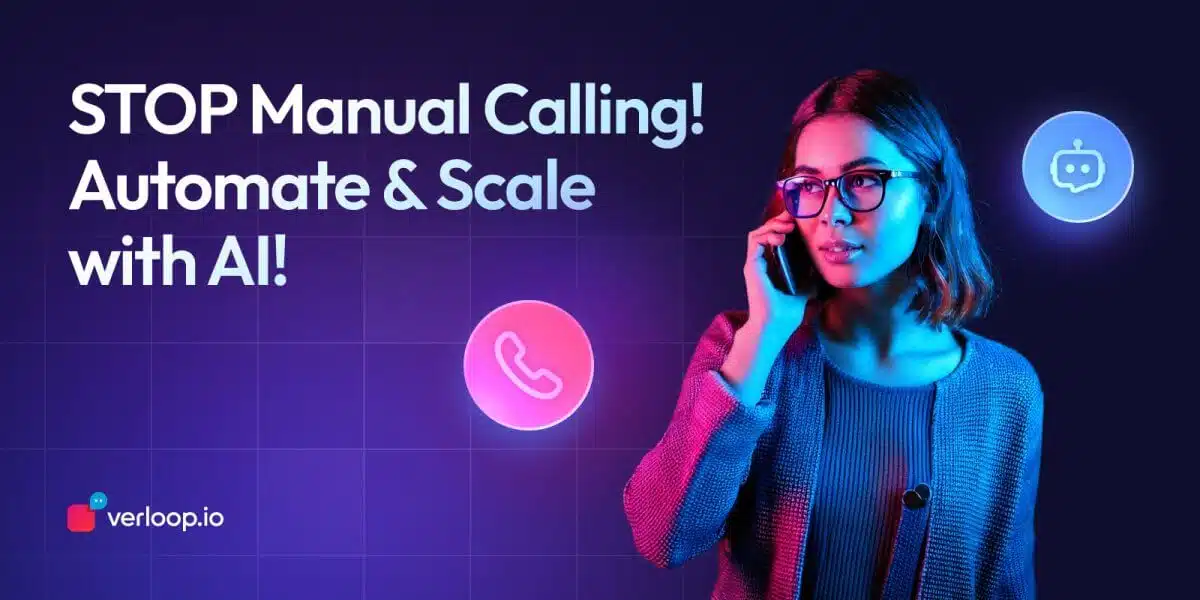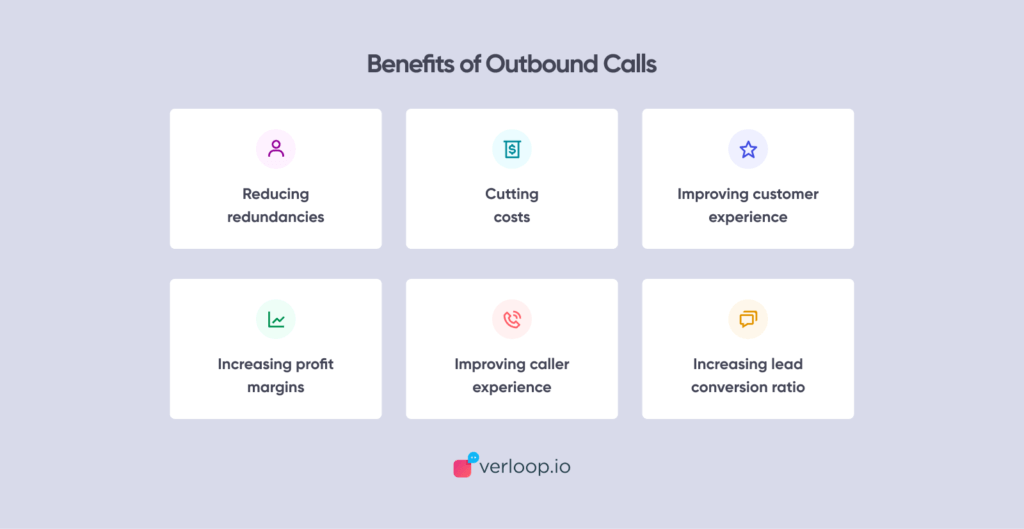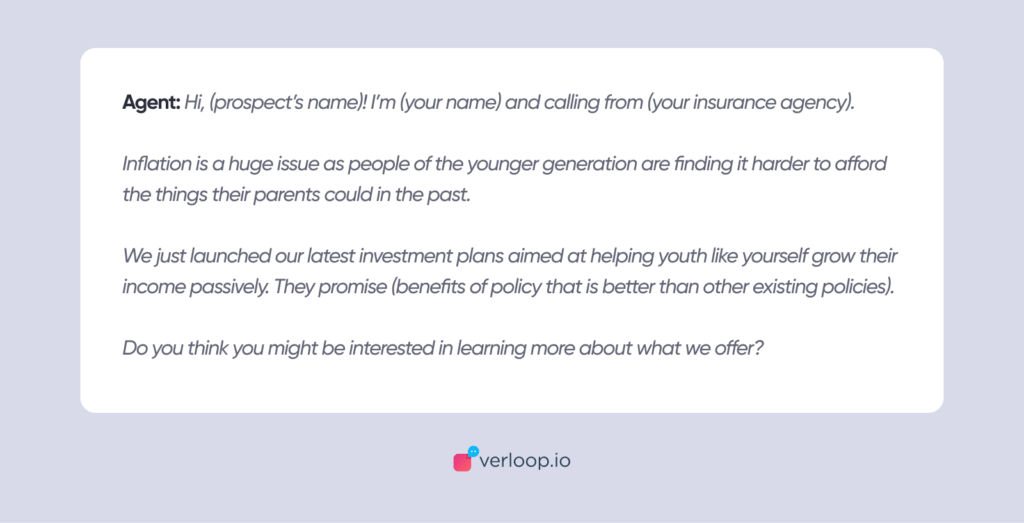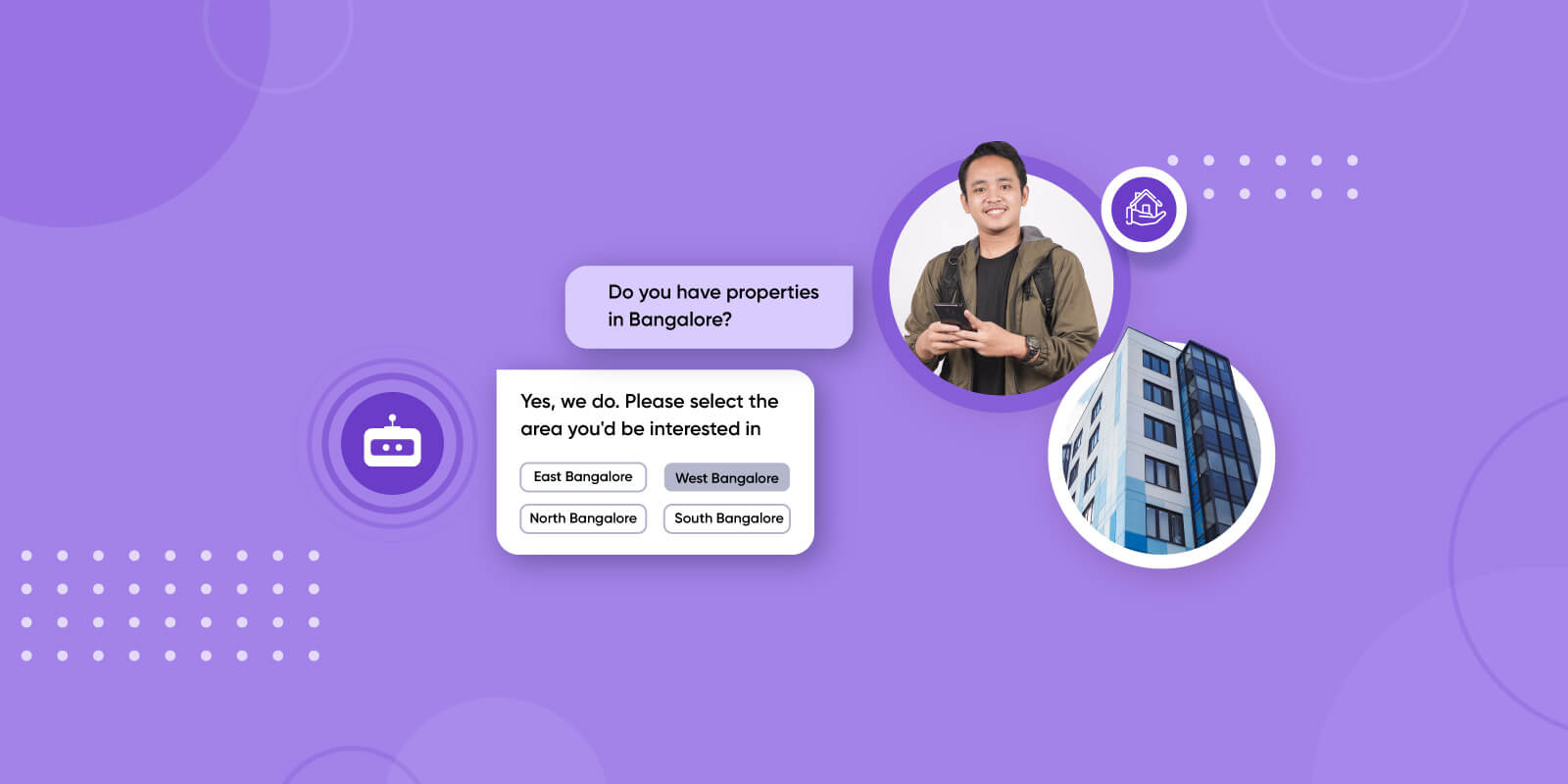
Automating Outbound Calls With Voice AI Platform
- February 17th, 2025 / 5 Mins read
-
Aarti Nair
This blog will cover everything you need to know about outbound call automation with the Voice AI platform so you can immediately reap the benefits of this powerful tool!
Imagine a small bank struggling to reach its customers for loan reminders. Their call center agents are overwhelmed, spending hours dialing numbers manually, only to be met with unanswered calls or rushed conversations. The process is slow, inefficient, and costly. Now, contrast this with a system where thousands of calls go out simultaneously, each tailored to the recipient—reminding one customer about an overdue payment, another about a pre-approved loan, and a third about a limited-time offer. No hold times, no missed follow-ups, just seamless, personalized outreach at scale.
This isn’t just a futuristic vision; it’s already happening. Voice AI-powered outbound calls are transforming customer communication, making it faster, more efficient, and highly scalable. With over 8.4 billion voice assistants in use today, businesses are increasingly adopting AI-driven solutions to handle routine calls, freeing up human agents for more complex conversations. The trend is only accelerating—by 2034, the global market for voice AI agents is projected to reach $47.5 billion, growing at a staggering CAGR of 34.8% from 2025 onward.
Companies across industries—banking, healthcare, retail, and beyond—are recognizing the immense potential of AI-powered outbound calling to enhance customer engagement, streamline operations, and reduce costs. But how exactly does it work, and what are the key benefits? Let’s dive in.
Table of Contents
- What are outbound calls?
- Reasons why your business needs automated outbound calls
- Types and practical use cases of outbound calls
- Strategies to optimise automated outbound calling
What are outbound calls?
Outbound calls are made when a business initiates a call with a user, prospect, or customer. Furthermore, they have a specific goal: delivering information related to a product or service, capturing customer feedback, collecting donations or raising funds, and more.
Regardless of the nature of the call, making an outbound call can drain resources as agents must identify the phone number, dial it, and wait for the call to connect. Even if the call does not connect, they have to report the reason for it. This entire cycle changes with automated outbound calls. Here, you have an autodialer that makes the call and even engages the customer preliminarily, after which it is handed over to an agent.
Imagine a telecom company launching a new data plan designed for high-usage customers. Traditionally, their sales team would manually call hundreds of potential subscribers, often encountering unanswered calls, long conversations, and inconsistent messaging. Now, with Voice AI-outbound calls, the company automates this outreach at scale while maintaining a personalized approach.
Here’s how the campaign unfolds:
📞 Step 1: AI-Driven Customer Targeting
The telecom provider analyzes customer usage patterns and identifies a segment of users who frequently exceed their data limits. These users are prime candidates for the new unlimited plan.
🗣️ Step 2: Personalized, Engaging Call
The AI voice assistant dials customers and delivers a tailored pitch:
“Hello [Customer Name], we noticed you often exceed your data limit. For a limited time, we’re offering an exclusive unlimited plan at just [Offer Price]. Would you like to upgrade now and enjoy uninterrupted browsing?”
💡 Step 3: Instant Customer Action
- If the customer is interested, the AI guides them through the upgrade process instantly.
- If they need more details, the AI answers FAQs on pricing, benefits, and terms.
- If they hesitate, the AI offers a follow-up SMS with plan details for later consideration.
📊 Step 4: Smart Insights & Follow-Ups
The system logs customer responses:
- “Yes” → Instantly upgrades the plan.
- “Maybe later” → Sends a follow-up message.
- “No” → Logs the reason for future campaign improvements.
Why It Works:
✔ Scalable Outreach: Thousands of calls placed simultaneously with no agent effort.
✔ Higher Conversions: Customers receive timely, relevant offers based on actual usage.
✔ Consistent Messaging: The AI delivers the pitch flawlessly every time.
✔ Data-Driven Optimization: Customer responses help refine future campaigns.
Outbound Voice AI isn’t just for telecom—it’s also used in retail for exclusive discounts, insurance for policy renewals, and hospitality for booking reminders. By automating sales and engagement calls, businesses can convert more leads with minimal effort while offering a seamless customer experience.
Reasons why your business needs automated outbound calls
Every business aims to engage customers efficiently, convert leads effectively, and optimise resources. Yet, traditional outbound calling methods are often slow, inconsistent, and resource-heavy. Voice AI-powered automated outbound calls address these challenges, offering a smarter, data-driven approach to customer communication. Here’s why they are essential:
1. Better Caller Experience
Customers dislike long wait times, repetitive calls, and irrelevant offers. Automated outbound calls deliver the right message at the right time, ensuring a seamless and personalised experience.
📌 Example: A retail brand launches a limited-time sale. Instead of relying on emails or mass SMS, an AI-driven call reaches customers with a tailored message:
“Hi [Name], your favourite brand is offering 30% off today. Would you like to hear more details?”
By enabling real-time interaction, the AI allows customers to engage instantly—whether by learning more, receiving a personalised discount code, or opting out without frustration.
2. Greater Operational Efficiency
Manually dialling numbers, repeating scripts, and handling uninterested leads waste valuable time. Automated outbound calls eliminate these inefficiencies by reaching thousands of customers simultaneously while filtering responses for human follow-ups only when necessary.
📌 Example: A car dealership runs a test drive campaign. Instead of sales reps spending hours making calls, the AI system dials customers, confirms interest, and schedules appointments. The sales team now only speaks to genuinely interested buyers, reducing wasted effort and increasing efficiency.
3. Higher Lead Conversion Rates
Speed matters in sales. Delayed follow-ups often result in lost leads. Voice AI ensures instant engagement, increasing the chances of conversion.
📌 Example: A loan provider pre-approves customers for credit. Instead of sending emails that go unread, an AI-driven outbound call instantly informs eligible customers, provides repayment details, and offers an option to speak with a representative. By engaging leads immediately, the business sees a higher response and conversion rate.
4. Improved Employee Productivity
Sales and support teams shouldn’t be bogged down with repetitive, low-value tasks. Automated outbound calls handle routine interactions, allowing employees to focus on high-value conversations.
📌 Example: A healthcare provider automates appointment confirmations through AI-powered calls. Instead of manually calling every patient, the system confirms, reschedules, or cancels bookings. Staff now spend more time providing care rather than chasing confirmations.
5. Targeted and Data-Driven Marketing
Automated outbound calls don’t just reach more people—they reach the right people. AI analyses customer behaviour and delivers personalised offers based on past interactions.
📌 Example: A subscription-based business tracks customer engagement and identifies inactive users. The AI calls them with an exclusive renewal offer, leading to higher retention rates compared to a generic email blast.
6. Cost Efficiency with Scalability
Hiring and training call centre agents is expensive, especially when demand fluctuates. Automated outbound calls provide a scalable solution at a fraction of the cost.
📌 Example: A utility company launches a billing reminder campaign. Instead of hiring additional agents to manage high call volumes, AI-powered calls notify customers, answer common questions, and offer self-service payment options. The company saves costs while improving collection rates.
7. Quick Set-Up and Faster Time-to-Market
Unlike traditional call centre operations that require extensive setup, AI-powered outbound calling solutions are deployed rapidly with pre-built integrations and automation workflows.
📌 Example: A travel agency wants to promote last-minute holiday packages. Within hours, an AI system is configured to call previous customers with tailored offers, leading to quick customer engagement and faster bookings.
8. The Competitive Advantage of Voice AI
Automated outbound calls don’t just improve efficiency—they create better customer experiences, optimise sales processes, and drive measurable business growth. By freeing employees from repetitive tasks, increasing conversions, and reducing costs, businesses gain a scalable, high-impact communication tool that keeps them ahead of the competition.
Suggested Reading: Why Voice-Based Customer Support is the Future?
Types and Practical Use Cases of Voice AI Outbound calls
As stated already, different outbound calls serve different purposes. They can fetch tangible results to push businesses of all shapes and sizes to make automated outbound calling a reality. Accordingly, they can be broadly classified into the following categories according to how they’re incorporated into an immaculate business strategy.
i. Improving Sales effectiveness
Automated outbound Calls ensure that a company’s resources are optimised efficiently. Since Sales is primarily a trial and error process, automated outbound calls can help by measuring the nitty-gritty that gets missed otherwise and help agents reach out to the customer correctly. Some of the use cases of automated outbound calls in Sales team include:
- Cold calling: This outbound call is a notorious one that is also the trickiest to manage. It requires hopping on a call with a prospect who has never interacted with your business. It is one of the oldest forms of business outreach, especially in the B2B sector.
- Follow-Up: Follow-up calls are a result of an action. The outbound call often comes right after a direct marketing campaign where the prospect was introduced to the business through direct mail like email, newsletter, brochures, etc. or a cold call.
- Data entry: Outbound calls can simplify and fasten the hectic data entry process. The information about who has previously called you, who has previously missed a call from you, and other follow-ups, etc., can be an added bonus.
ii. Enhancing marketing endeavours
Automated outbound calls can help businesses curate the best marketing strategies by supplementing them correctly. It can also help in targeting the right demography to multiply numbers and maintain a high success rate. Here’s how!
- Market research: These outbound calls help businesses discover target audiences and understand the market gaps and demands they can fill. It is also used to get feedback on different products and services.
- Improving brand awareness: Automated outbound calls can help optimise marketing strategies by reaching the right customers and presenting the brand in a refined way.
- Lead generation: Lead generation outbound calls are a more refined form of follow-up calls where you only pursue those customers who have shown an active interest in purchasing from you. They might have displayed their interest by visiting your website, opening your mail, or following you on social media.
- Telemarketing: Telemarketing calls involve a one-to-one interaction wherein a business tries to market a product or a service over the phone. In addition to targeting new prospects, it is also used for resales, upselling, and cross-selling.
iii. Upgrading Customer Support
While customer support is primarily viewed in its inbound calling form, it can also benefit from outbound calling. It is particularly useful in extending customer support and self-servicing options during the onboarding and activation stages of the customer lifecycle.
- Quick actions: Rather than waiting for agents to get in line with the customers, users can skip past being on hold and directly get answers to their relevant queries through automated outbound calls upon reaching out to the support team regarding their queries.
- Reminders and updates: If you sell a subscription-based product, or optimise calls for EMIs or loan payment, a courtesy call to existing customers informing them about an upcoming payment or an automatic deduction helps keep them in the loop. The same applies to outbound calls offering any updates on the product or service.
- Feedback collection: Feedback becomes a primary scope for observing customer experience. However, customers may not be willing to engage with traditional methods to collect feedback. Automated outbound calls can take over to understand a customer’s standing features and products.
From the above, it is evident that most outbound calls are routine in nature and do not necessarily require a human agent to orchestrate the entire interaction from scratch. Some can be handled through basic autodialers, while others require more nuanced technology like voice bots with handover points wherever necessary.
Either way, the resulting automated phone calls for businesses attract a bouquet of benefits by

Strategies to optimise automated outbound calling
Now that we have dived into the nitty-gritty of automated outbound calls, let’s look at how they can be implemented seamlessly into the business value chain.
1. Outbound autodialer
Outbound autodialers make outgoing calls easier by dialling numbers and screening out numbers that are busy, disconnected, or redirected straight to voicemail. Such an outbound calling solution saves your agents’ time as they only have to get on call once connected to an individual. As such, call centres can manage high calls without stress.
2. Personalised scripting
Some people perceive outbound calls as irksome. However, here, you can integrate the outbound calling solution with a CRM that offers an overview of the individual’s profile so that agents can genuinely connect with them by crafting a perfect pitch for their tastes.

This can be crucial for follow-up calls and conversing with existing customers regarding a product release or any update based on the information already shared with the customer.
3. DNC lists
Automated voice call services in India (and abroad, too) require adherence to the strict DND (Do Not Disturb) policies enforced by bodies like the TRAI. As such, the automated outbound call tool should ensure that the numbers on the Do Not Call (DNC) registry get screened out before making any call. It is not just a regulatory norm but also respectful of a customer’s decision not to be contacted.
Automate Outbound Calls with Voice AI Now!
Automated outbound calls can fetch benefits in cost-effectiveness, targeted marketing, improved caller experience, higher lead conversion ratio, better employee productivity, and greater operational efficiency. Such tangible advantages are impactful enough to push businesses and call centres of all shapes and sizes to make automated outbound calling a reality using the right solutions.
Verloop.io’s voice AI technology helps small and large companies automate their outbound calls with the help of voice bots. To save your agent’s time and improve your customer experience, schedule a demo with one of Verloop’s conversational experts!







